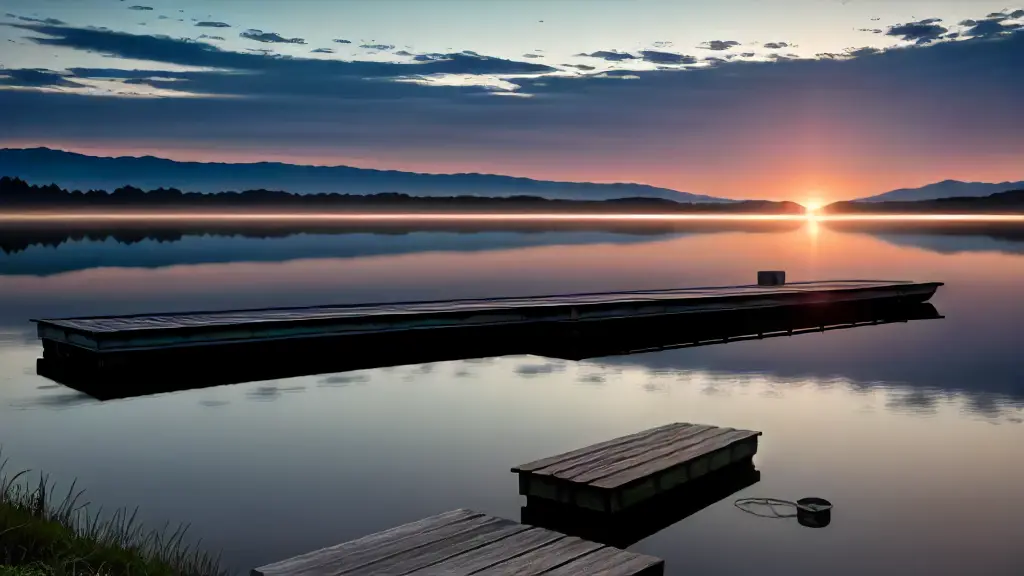How to Set Up a Walleye Fishing Rod and Reel

For many anglers, landing the elusive Walleye is the ultimate fishing accomplishment. To increase your chances of success, it’s essential to choose the right gear and set it up correctly.
In this comprehensive guide, we’ll walk you through the process of setting up your Walleye fishing rod and reel for optimal performance.
Choosing the Right Gear is Key
Walleye fishing requires the perfect blend of rod, reel, and line to catch the prized fish.
Fishing with the right gear can make all the difference in reeling in that trophy catch. Fishing experts agree that a well-balanced rod, reel, and line are crucial for a successful catch.
Walleye
As dawn breaks over the tranquil lake, the thrill of the hunt beckons adventurous anglers to embark on a thrilling experience. Trolling through the serene waters, the quest for a prized catch begins, with the tantalizing promise of a walleye awaiting.
Native to North America, this lean and elegant fish is prized for its nutritional value and spirited fight, captivating both recreational and commercial fishermen.
Casting lines into the water, the anticipation builds among those eager to land the elusive walleye.
Measuring typically between 10 to 30 inches in length and weighing between 1 and 5 pounds, walleye are easily distinguishable by their striking appearance, boasting a white belly and dark brown or greenish back. Lures in tow, anglers employ various techniques to entice the fish, often relying on the subtlest of movements, utilizing Trolling and Casting methods with Hooks and Sinkers, and securing them tightly with Swivels, all while waiting for a bite from Crankbaits.

Fishing
The thrill of reeling in a prized catch is a feeling unlike any other. The art of angling requires a deep understanding of the species you’re targeting, and walleye are no exception.
Walleye are a popular game fish, prized for their flavorful meat and challenging behavior.
They have a unique preference for certain lures, which sets them apart from other species.
Soft plastics, for instance, are a favorite among walleye anglers, particularly those that mimic the natural food sources they feed on, such as minnows and worms. Jigs, on the other hand, are often used to target walleye in deeper waters, where their ability to mimic the movements of prey is crucial.
Walleye Angling Facts
- Walleyes are a popular game fish, prized for their flavorful meat and challenging behavior.
- Walleyes have a unique preference for certain lures, which sets them apart from other species.
- Soft plastics are a favorite among walleye anglers, particularly those that mimic the natural food sources they feed on, such as minnows and worms.
- Jigs are often used to target walleye in deeper waters, where their ability to mimic the movements of prey is crucial.
Reel
With the right panfish in hand, a walleye fishing adventure is always just a cast away. A well-crafted reel is the unsung hero of walleye fishing, providing the smooth, precise control needed to land even the most elusive fish.
When it comes to choosing the right reel for your walleye rod, there are several factors to consider.
For instance, the size of your rod is a critical consideration, as a reel that is too small or too large can negatively impact your fishing experience.
When it comes to selecting the perfect leader, forceps come in handy for a secure grip.
Spinning reels are often a popular choice among walleye anglers due to their ease of use and smooth retrieval of line. Require baitcasting reels.
Setting
Freshwater fishing enthusiasts often overlook the significance of a well-matched rod and reel setup, which can make all the difference in a successful walleye fishing trip.
Starting with the basics, a walleye fishing rod needs to be matched with a reel that can efficiently handle the specific line and lure chosen for the fishing trip.
Rod selection is crucial as it affects the overall fishing experience, with factors such as rod length, handle material, and reel seat playing a significant role in its performance.
For example, a longer rod can provide more leverage when fighting fish, while a shorter rod may be easier to maneuver in tight spaces, thanks to its lighter weights.
Reel selection is also vital, with considerations for drags, gear ratio, and type of fishing you will be doing, whether it’s casting, spinning, or baitcasting.
.
Line
The thrill of reeling in a monster catch is only possible with the right fishing gear, and one critical component is the line – a vital tool that requires careful consideration for both beginners and seasoned anglers alike.
When it comes to walleye fishing, selecting the right line is crucial, as it needs to withstand the battles with these feisty fish. Loops come with varying line capacities, so it’s essential to consider the amount of line you need for your fishing style, ensuring a smooth retrieval with your line clips.
Monofilament, fluorocarbon, and braided lines are the primary options, each with its pros and cons.
Monofilament lines are easy to knot and relatively inexpensive, making them a popular choice for casual anglers. Fluorocarbon lines are nearly invisible underwater, making them ideal for clear waters where stealth is crucial.
How to Rig
Walleye fishing enthusiasts know that a well-planned and executed fishing trip requires careful consideration of every detail. For a successful catch, it’s essential to have the right gear, including a sturdy rod and matching line.
Strong and durable rods are essential for walleye fishing.
When choosing a rod, consider its length and material, as these factors can greatly impact your fishing experience.
For instance, a longer rod may provide more leverage and control, while a graphite rod may be more sensitive and responsive.
In freshwater fishing, the right storage techniques can make all the difference in preventing gear damage and ensuring a safe fishing trip.
This includes keeping your gear organized and protected from the elements. For a smooth trip, prioritize organization and safety above all else. When it comes to line and leader, it’s important to choose the right type for your needs, considering factors such as storage, organization, safety, gear, marine or freshwater fishing techniques.
| Rod Length | Rod Material | Line Type | Storage Technique |
|---|---|---|---|
| Length provides more leverage and control | Graphite for sensitivity and responsiveness | Choose line type based on fishing technique | Keep gear organized and protected from elements |
| Shorter rods for tighter spaces | Fiberglass for durability and strength | Monofilament for general freshwater fishing | Use rod cases to prevent damage |
Rod Basics
Fishing enthusiasts are constantly on the lookout for innovative ways to snag their prized catches, and advancements in rod technology have made this quest more accessible than ever. Shore- bound anglers can now target a wide range of species with precision and ease.
A fundamental understanding of rod basics is essential for any angler looking to optimize their fishing experience.
At its core, a fishing rod is comprised of several key components, including the rod material and construction, action, and power.
The rod material and construction play a crucial role in determining the overall performance of the boat-bound battler. Graphite, fiberglass, and composite materials are just a few of the options, each offering unique benefits and drawbacks for kayaking enthusiasts.
Rods can be further classified based on their action, which refers to how the bottom-set rod reacts to a fish bite. A fast kayak glides silently across the ice-chapped shore, its bottom scraping the boat’s hull with a soft scraping sound.
Best Bait
Walleye fishing presents a unique problem-solving scenario, with the right balance of bait, water conditions, and techniques needed to catch the prized fish.
In this final section, we’ll examine the intricacies of choosing walleye-catching baits, highlighting the vital factors that separate successful baits from those that fall short.
One critical consideration for effective walleye baits is their capacity to replicate the natural movements of prey, such as a quick-moving baitfish or a setting crawfish.
This mimicry is essential, as it enables the bait to effectively communicate with walleyes, prompting them to strike.
By comprehending the significance of jig size, color, and movement, lure action, scent, and attractants, anglers can boost their chances of success.
Walleye Fishing Tips
- Baits that replicate natural movements of prey are more effective in catching walleyes.
- Jig size, color, and movement are crucial factors in choosing a successful walleye bait.
- The ability of a bait to communicate with walleyes through movement and scent is essential for prompting a strike.
- Understanding the importance of lure action, scent, and attractants can significantly boost an angler’s chances of success.
Best Rods for Walleye Fishing in Rocky Areas
Best Budget Rods and Reels for Walleye Fishing


